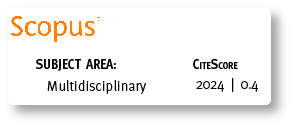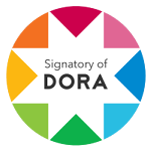Vocational characteristics and social behavior of the Generation Z. Case El Triunfo, Ecuador
DOI:
https://doi.org/10.18537/mskn.11.01.03Keywords:
Generation Z, interests and vocational skills, social behavior, life projectAbstract
The main objective of this study was to characterize the Z generation and what their professional interests and aptitudes are as an indicator of the construction of their life projects, as well as, to explore the social behavior that the action entails in making vocational decisions. The sample is made up of 161 students and is characterized by 45% women and 55% men between 13 and 19 years old. The results indicate that the analyzed group builds its life projects on interests focused on art and aptitudes towards medicine and health sciences, with strong characteristics of consideration with others, but with a latent need for leadership indicators.
Downloads
Metrics
References
Bland, C., Meurer, L., & Maldonado, G. (1995). Determinants of primary care specialty choice: a non-statistical meta-analysis of the literature. Academic Medicine, 70(7), 620-641.
Burcaglia, T. S. (2013). El arribo de la generación Z. Obtenido de https://www.lanacion.com.ar/ lifestyle/el-arribo-de-la-generacion-z-nid1611438
Carlsson, G., & Karlsson, K. (1970). Age, cohorts and the generation of generations. American Sociological Review, 35(4), 710-718.
Cerezo, P. (2016). Los auténticos nativos digitales: ¿Estamos preparados para la Generación Z? Revista de Estudios de Juventud, 114, 95-106. Obtenido de http://www.injuve.es/sites/default/ files/2017/28/publicaciones/tema_e_introduccion.pdf
Décima, J. (2019). Adiós Millennials: llega la "Generación Z". Obtenido de https://www.clarin.com/mundo/ansiedad-diversidad-redes-sociales-perfil-generacion_0_9FCAtw53i.html
Eisenberg, N., & Fabes, R. (2006). Emotion regulation and children's socioemotional competence. En: Balter, L. y Tamis-LeMonda, C. (Eds.). Childs psychology: a handbook of contemporary issue (357- 381), Nueva York: Psychology Press.
Ensick, M. G. (2013). Generación Z: La vida a través de una pantalla. Obtenido de https://www.lanacion.com.ar/lifestyle/generacion-z-la-vida-a-traves-de-una-pantalla-nid1547175
Florenzano, R. (1996). Aspectos biopsicosociales del crecimiento y desarrollo. En: Maddaleno, M. y Florenzano, R. (Eds.). Guías Curriculares. Salud integral del adolescente. Santiago: Corporación de Promoción Universitaria; 1996. p. 31-41.
Fumero, A. (2011). Medios para la información, la relación y la comunicación en la web 2.0. El Profesional de la Información, 20(6), 605-609. https://doi.org/10.3145/epi.2011.nov.01
Gaete, V. (2015). Desarrollo psicosocial del adolescente. Revista Chilena de Pediatría, 86(6), 436-443. http://dx.doi.org/10.1016/j.rchipe.2015.07.005
Gómez, P. L., & Palma, H. M. (2019). Caracterización de la Generación Z y proyectos de vida. Universidad Estatal de Milagro, Tesis de Licenciatura en Psicología, 51 pp. http://repositorio.unemi.edu.ec/ handle/123456789/4836
Hornberger, L. (2006). Adolescent psychological growth and development. Journal of Pediatric and Adolescent Gynecology, 19(3), 243-246. https://doi.org/ 10.1016/j.jpag.2006.02.013
Inglés, C., Benavides, G., Redondo, J., García-Fernández, J., Ruiz-Esteban, C., Estévez, C., & Huescar, E. (2009). Conducta prosocial y rendimiento académico en estudiantes españoles de educación secundaria obligatoria. Anales de Psicología, 25(1),93-101.
Mastroianni, B. (2016). How Generation Z is changing the tech world. CBS News. Disponible en https://www.cbsnews.com/news/social-media-fuels-a-change-in-generations-with-the-rise-of-gen-z/
Muuss, R. (1996). Erik Erikson´s theory of identity development. New York, NY: McGraw-Hill.
OPS. (2010). Estrategia y plan de acción regional sobre los adolescentes y jóvenes 2010-2018. 58 pp. Washington D.C., USA: Organización Panamericana de la Salud, Disponible en https://new.paho.org/hq/dmdocuments/2011/Estrategia-y-Plan-de-Accion-Regional-sobre-los-Adolescentes-y-Jovenes.pdf
Prensky, M. (2001). Digital game-based learning. Chapter 1, 19 pp. New York, NY: McGraw-Hill. Disponible en http://marcprensky.com/writing/ Prensky%20-%20Ch1-Digital%20Game-Based%20Learning.pdf
Prensky, M. (2011). Enseñar a los nativos digitales. Puerto Rico: Ediciones SM Inc. 240 pp.
Sanders, R. A. (2013). Adolescent psychosocial, social and cognitive development. Pediatrics in Review, 34(8), 354-358.
Silva, F., & Martorell, M. (2001). BAS 3 Batería de socialización (autoevaluación). Madrid, España: TEA Ediciones.
Strauss, W., & Howe, N. (1991). Generations: the history of America’s future, 1584 to 2069. (1st ed.). New York, USA.
Published
How to Cite
Issue
Section
License
Copyright © Autors. Creative Commons Attribution 4.0 License. for any article submitted from 6 June 2017 onwards. For manuscripts submitted before, the CC BY 3.0 License was used.
![]()
You are free to:
 |
Share — copy and redistribute the material in any medium or format |
 |
Adapt — remix, transform, and build upon the material for any purpose, even commercially. |
Under the following conditions:
 |
Attribution — You must give appropriate credit, provide a link to the licence, and indicate if changes were made. You may do so in any reasonable manner, but not in any way that suggests the licenser endorses you or your use. |
| No additional restrictions — You may not apply legal terms or technological measures that legally restrict others from doing anything the licence permits. |









